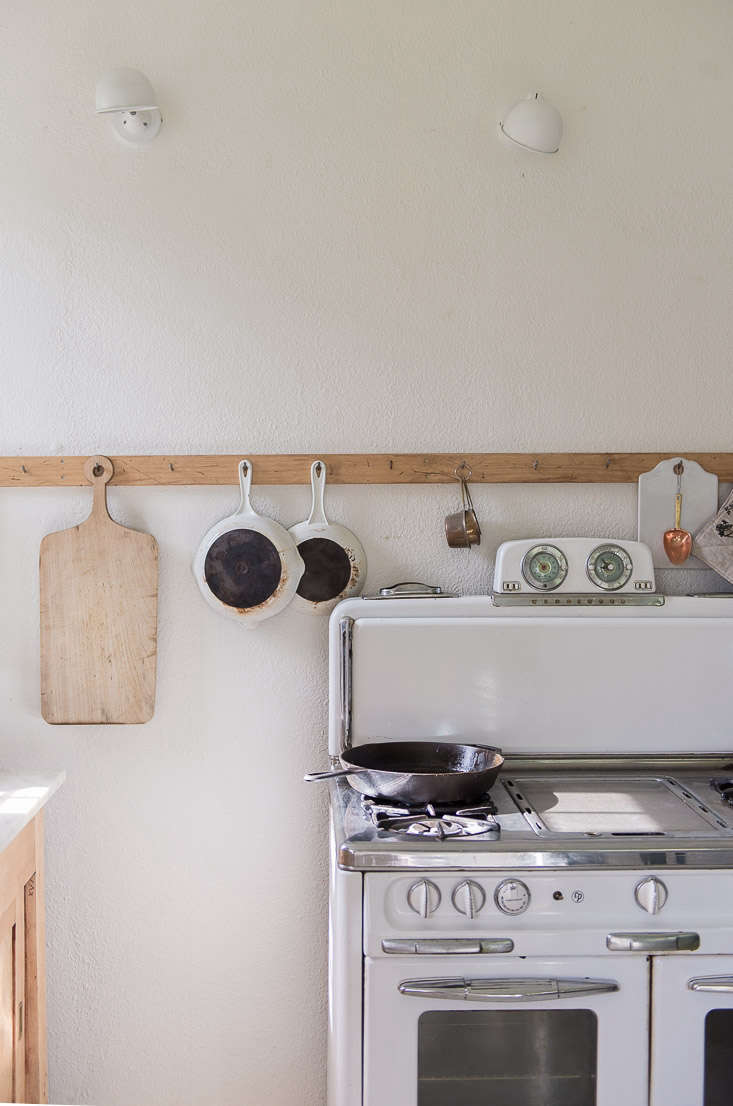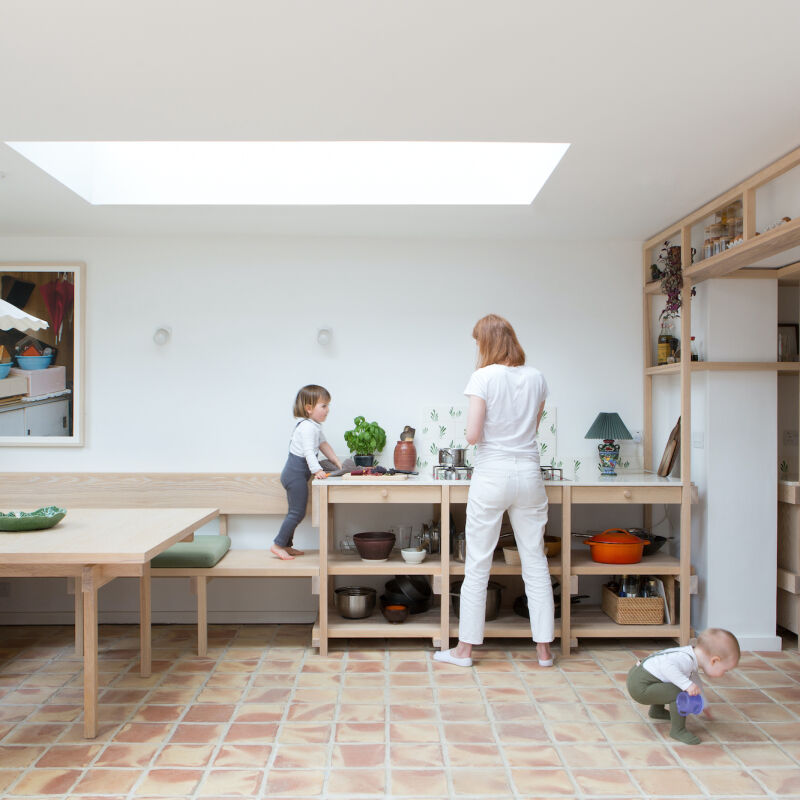Chances are, if you’re in the market for a new range or cooktop, you already know where your allegiances lie when it comes to gas versus electric. (Like shower versus bath, it’s one of those remodeling matters where people tend to fall in one camp or the other.) But there’s a whole world of options beyond gas and electric. While fuel type is part of the deciding factor, there are also choices to make in terms of the cooktop material and the heating type. A gas cooktop needs gas, of course, but it also needs electricity, since that’s what lights the pilots. Other cooktop options—including induction, ceramic (or smoothtop), and coil versus disk cooktops—operate on electricity alone but use it in different ways.
What’s the best option for you? Here’s the lowdown on what’s available these days, with pros and cons for each type.

1. Gas Cooktops
Many cooks prefer gas for its speedy response and the fact that you can actually see the flame. A gas cooktop generally has heavy-duty cast iron grates (sometimes with an enamel finish) over a stainless steel surface.
Pros:
- Suitable for any type of cookware.
- Precise control over the heat source: There’s no waiting for the burner to heat up; the flame changes as you raise or lower the heat and is easily adjustable.
- Safe, since you can easily see whether the gas is on or off (and it’s off as soon as you turn it off).
- The continuous grates found in many models make it easy to slide heavy pots from one burner to another.
- Costs less to operate than an electric cooktop.
- Most gas cooktops have burners of different sizes that offer different power levels.
- And, a grate with a special wok holder is often an option.
Cons:
- If you don’t have gas in your kitchen, it can be costly to have a gas line installed. (But note that propane tanks are sometimes a substitute.)
- The grates are harder to keep clean than other options. (But they may be dishwasher-safe, depending on the model.)
- Take care when using an open flame, and keep combustible items such as tea towels and oven gloves far away from the burners.

2. Electric Coil Cooktops
This old-school electric cooktop is still seen in many kitchens; the heating elements are round metal coils.
Pros:
- The least expensive type of cooktop on the market.
- You can use any type of cookware.
- Good for cooking at low temperatures.
- Durable and reliable; can’t be damaged by heavy pots.
Cons:
- The cooking surface heats slowly and remains hot for a while after it’s turned off.
- It’s hard to make precise adjustments to the heat level.
- Not so easily cleaned, since food can fall into the bowls under the coils.

3. Solid Disk Cooktops
These are much the same as the cooktops with electric coils, except that its burners are solid metal disks (also called “hotplate” burners).
Pros:
- Tied with electric coil cooktops for the least expensive type of cooktop on the market.
- You can use any type of cookware.
- Good for cooking at low temperatures.
- Even more durable than the electric coil cooktop; can’t be damaged by heavy pots.
- Easier to clean than electric coils, since food can’t fall underneath.
Cons:
- Even slower to heat up than the coil cooktop, and very slow to cool down.
- Adjusting heat levels is even less precise.

4. Smoothtop Cooktops
These have a top that’s, yes, smooth, and usually made of ceramic glass, with electric heating elements below.
Pros:
- Sleek, unobtrusive look.
- Easy to clean, since it’s flat: just wipe it down with a sponge.
- Heats up more quickly than electric coils.
- Good for cooking at low temperatures.
- The surface can provide extra counter space when you’re not cooking on it.
- Adjustable burners offer two diameters, meaning you don’t have to heat the entire element for a small pot.
Cons:
- The top can be stained, scratched by pots or abrasive cleansers, or even broken by a heavy object falling on it.
- Ceramic glass can be slow to cool.
- More expensive than a cooktop with electric coils and harder to repair.

5. Induction Cooktops
These cooktops are visually appealing, with their sleek modern style. To operate, the electric current heats a copper coil beneath the ceramic surface, creating an electromagnetic field that heats only the pot on top. (Yes, it does sound like magic.)
Pros:
- The safest option, because burners remain cool to the touch even when they’re turned on. (Another plus: They won’t heat up the kitchen in hot weather.)
- An especially easy-to-clean surface (read: no baked-on food), particularly since many models don’t even have knobs.
- Speedy response (even faster than gas), and easily adjusted.
- Very even heat distribution.
- Best for energy-efficiency.
- The slim, compact size of the cooktop itself allows for more drawer and cabinet space underneath.
- High-end options can include individual timers and spill detectors.
Cons:
- Requires flat-bottomed pots containing iron, although most common brands of cookware do. Just be sure not to use glass or aluminum cookware—it won’t work.
- The most expensive option.
- Need to match pan size to burner size.
- Hard to repair.
6. Modular Cooktops
A number of manufacturers, including Jenn-Air, Miele, and Wolf, let you build a custom cooktop. Modules range from two-burner units that are either gas or induction (so you could have one of each), plus griddles, steamers, grills, wok units, and deep-fryers. Downdraft ventilation is another possible add-on.
Pro:
- The ultimate cooking flexibility.
Con:
- Depending on your choices, this is likely to be the most expensive option.
Parting Advice
When deciding on which cooktop is right for you, research consumer reviews to determine the most durable brands, and look for easy-to-read controls on whatever model you choose. And consider your cooking style, realistically: Don’t buy something that’s bigger (or more high-tech) than you need.
Plus, for much more on kitchen ranges, head to our Ranges & Cooktops page, then read on:
- Remodeling 101: The Viking vs. Wolf Range Debate
- Remodeling 101: What to Know When Replacing Your Range
- Decoding BTUs: How Much Cooking Power Do You Really Need?
N.B.: Featured photograph by Lucille Gauthier-Braud from Steal This Look: A Sunny Ikea Kitchen in the Marais.
Frequently asked questions
What are the different types of kitchen stoves and cooktops available?
There are several types of kitchen stoves and cooktops available, including gas, electric, induction, ceramic, and glass cooktops. Each type has its own features, advantages, and considerations.
What are the advantages of gas stoves and cooktops?
Gas stoves and cooktops offer precise temperature control, immediate heat, and the ability to adjust the flame intensity quickly. They are preferred by many professional chefs for their responsiveness and the visual control of the flame. Gas cooktops also work during power outages, as they do not rely on electricity.
What are the advantages of electric stoves and cooktops?
Electric stoves and cooktops are generally more affordable than gas or induction options. They offer consistent heat distribution, easy cleaning, and a smooth surface that is often preferred for certain cooking techniques, such as simmering or melting. Electric cooktops also come in various styles, such as coil or smooth top.
What are the advantages of induction stoves and cooktops?
Induction stoves and cooktops use electromagnetic fields to heat the cookware directly, providing rapid and precise heating. They offer excellent energy efficiency, faster cooking times, and a safer cooking surface, as the cooktop remains cool to the touch. Induction cooktops are also easy to clean.
What are the advantages of ceramic and glass cooktops?
Ceramic and glass cooktops provide a sleek and modern appearance to the kitchen. They are easy to clean and offer a flat, smooth surface. These cooktops often feature radiant heating elements underneath the ceramic or glass, providing consistent heat distribution.
What factors should I consider when choosing a stove or cooktop?
Several factors should be considered when choosing a stove or cooktop, including your cooking preferences, budget, available energy sources, safety considerations, and the kitchen's overall design. Assessing factors such as heat control, energy efficiency, maintenance, and installation requirements can help determine the most suitable option.
Are certain types of cookware required for specific stoves or cooktops?
Induction cooktops require the use of magnetic cookware made from materials such as stainless steel or cast iron. Gas, electric, ceramic, and glass cooktops can accommodate a wide range of cookware types. It's important to check the manufacturer's guidelines to ensure compatibility and avoid damaging the cooktop.





Have a Question or Comment About This Post?
Join the conversation